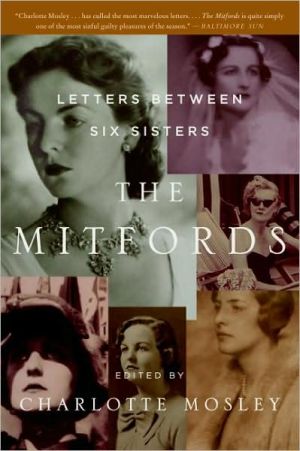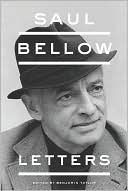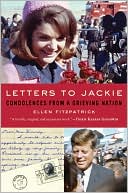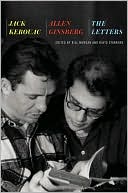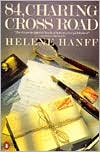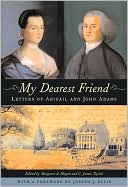Mitfords: Letters Between Six Sisters
The Mitford sisters were the great wits and beauties of their time. Immoderate in their passions for ideas and people, they counted among their diverse friends Adolf Hitler and Queen Elizabeth II, Cecil Beaton and President Kennedy, Evelyn Waugh and Givenchy.\ The Mitfords offers an unparalleled look at these privileged siblings through their own unabashed correspondence. Spanning the twentieth century, the magically vivid letters of the legendary Mitfords constitute a superb social and...
Search in google:
The Mitford sisters were the great wits and beauties of their time. Immoderate in their passions for ideas and people, they counted among their diverse friends Adolf Hitler and Queen Elizabeth II, Cecil Beaton and President Kennedy, Evelyn Waugh and Givenchy. The Mitfords offers an unparalleled look at these privileged siblings through their own unabashed correspondence. Spanning the twentieth century, the magically vivid letters of the legendary Mitfords constitute a superb social and historical chronicle and an intimate portrait of the stormy but enduring relationships between six beautiful, gifted, and radically different women.The Barnes & Noble ReviewFor much of the 20th century the six beautiful and variously gifted daughters of David Mitford, Lord Redesdale, appear again and again on the stage of world events. Two made their names with their pens: the eldest, Nancy, became the prolific and famed novelist and biographer; her younger sister Jessica, an ardent Communist, emigrated to the U.S. and rose to prominence as a journalist with her indelible The American Way of Death. The youngest, Deborah, married into the peerage, but for two of the sisters, ties to fascism would define their lives: Diana left her first husband for the charismatic British fascist Oswald Mosley and took her teenage sister, Unity, with her on a 1933 trip to Germany. Already a passionate follower of Mosley, Unity embarked on a personal quest to become acquainted with Hitler (she did). When war came, the devastated girl attempted suicide; meanwhile, Diana and her husband were imprisoned and effectively exiled from English society for the rest of their lives. This rich collection of the the sisters' correspondence (nicely choreographed by Diana's daughter-in-law Charlotte Mosley) brings to light their peculiar, passionate, often contradictory relationships -- frequently divided by their politics, the six nevertheless pined for letters from one another, and their betrayals and rivalries are chronicled here in their odd, cryptic private nursery language. Letters between Diana and Unity during the 1930s carry a particularly compelling, nightmarish edge. But the impact is in the whole, sprawling over decades, houses, politics, children, literary awards, and rude houseguests: a beguiling tangle of lives and personas, shot through with the brillance that made the Mitfords what they were. --Bill Tipper
The Mitfords\ Letters Between Six Sisters \ \ By Charlotte Mosley \ HarperCollins\ Copyright © 2007 Charlotte Mosley\ All right reserved.\ ISBN: 978-0-06-137364-0 \ \ \ \ Chapter One\ 1925-1933 \ There are few letters to record the Mitford sisters' childhood and early youth, and such letters as they did write were mostly to their mother and father. Nor are there many letters dating back to the eight years covered in this section. By 1925, only Nancy, aged twenty-one, and Pamela, aged eighteen, had gone out into the world; the four youngest children were still in the nursery or schoolroom. Nancy's main family correspondent at the time was her brother Tom, and Pamela-who confided mostly in Diana-was the least prolific writer of the sisters.\ When the letters begin, the family had been living for six years at Asthall Manor, a seventeenth-century house in the Cotswolds, which the sisters' father, Lord Redesdale, had bought when he sold Batsford Park, a rambling Victorian pile that he had inherited in 1916 and could not afford to keep up. Before the First World War, David Redesdale, or 'Farve' as he was known to his children, lived in London where he worked as office manager for The Lady, the magazine founded by his father-in-law. Life in the country was far better suited to this unbookish, unsociable man, whose happiest moments were spent by the Windrush, a trout river that ran past Asthall, or in the woods where he watched his young pheasants hatch. Unluckily for his family, country sports did not exhaust his energies and Asthall, which the children loved, was not to his liking. In 1926, they moved to Swinbrook House in Oxfordshire, a grim, ungainly edifice that Lord Redesdale had built on top of a hill near Swinbrook village. All the sisters except Deborah, who was six when they moved, disliked the new house, which was cold, draughty and impractical. Worst of all, unlike Asthall where the library had been in a converted barn some distance from the house and where the children were left undisturbed, there was no room at Swinbrook that they could call their own. The younger children found some warmth and privacy in a heated linen cupboard, later immortalized in Nancy's novels as the 'Hons' cupboard', while the older children had to share the drawing room or sit in their small bedrooms. Lord Redesdale was hurt by the family's dislike of his dream project and began to spend more time at 26 Rutland Gate, a large London house overlooking Hyde Park that he had bought when Asthall was sold.\ The sisters were in awe of their father. Strikingly handsome, with the brilliant blue eyes that passed down to his children, he was kindhearted, jovial and the source of much of the fun that was had in the family. Deborah remembered him as 'charming, brilliant without being clever' and uproariously funny when in a good mood. She wrote that when he and Nancy started sparring they were better than anything she had ever seen on stage, 'a pair of comedians of the first order'. But he could also be impatient and had a violent temper. The smallest transgression-a child spilling her food or being a minute late-could send him into a towering rage. His anger was all the more alarming for being unpredictable: he would turn with sudden fury on one of his daughters and then, for no apparent reason, decide to single out another. Their way of standing up to him, and of drawing his unwrathful attention, was to catch their father in one of his sunnier moods and tease him, which he took in good part. Jessica used to call him 'the Old Sub-Human' and pretend to measure his skull for science or would gently shake his hand when he was drinking a cup of tea to give him 'palsy practice' for when he grew old. Nancy's caricature of him in her first novel, Highland Fling, as the jingoistic, hot-tempered General Murgatroyd-a precursor of the formidable Uncle Matthew in her later novels-was an effective way of reducing this larger-than-life figure to less alarming dimensions. As they grew up, the sisters rarely seem to have resented Farve and looked back on his autocratic eccentricities with affectionate amusement. The inclination to hero-worship is foreshadowed in their relationship with their father; like the other powerful men who were to come into their lives, he could do no wrong.\ Their resentment-and that of Nancy and Jessica in particular-against the perceived shortcomings of their upbringing was reserved for their mother. In contrast to her moody, volatile husband, Sydney, or 'Muv' as her children called her, was cool and detached. Her own mother had died when she was seven years old and at the age of fourteen she had taken on the responsibility of running her father's household. This had taught her financial prudence and to be a good manager-qualities that came in useful later when raising a family of seven on never quite enough money-but it also created a certain rigidity in her attitude to her children when they were growing up; an inflexibility that fuelled her daughters' rebellious behaviour and their desire to shock.\ From her father, Lady Redesdale had inherited definite opinions about health and diet, believing that the 'good body' would heal itself more effectively without the intervention of doctors or medicine. An early campaigner against refined sugar and white flour, she made sure that her children ate only wholemeal bread, baked to her recipe. Physically undemonstrative, she rarely exhibited outward signs of maternal warmth and seldom hugged or cuddled her daughters, who had to compete fiercely for the scarce resource of her attention. In 'Blor', an essay on her childhood, Nancy described her mother as living 'in a dream world of her own', detached to the point of neglect. In her fictional portrait of her as Aunt Sadie, she depicted a more sympathetic character but one that was nevertheless remote and disapproving. But the aloofness that some of her daughters complained of also had ...\ (Continues...)\ \ \ \ \ Excerpted from The Mitfords by Charlotte Mosley Copyright © 2007 by Charlotte Mosley. Excerpted by permission.\ All rights reserved. No part of this excerpt may be reproduced or reprinted without permission in writing from the publisher.\ Excerpts are provided by Dial-A-Book Inc. solely for the personal use of visitors to this web site. \ \
\ O magazine“Funny, loving, sparkly, snarky, heartbreaking, chilling, gossipy, wise….You’ll be rewarded with six up-close, personal-and sometimes appalling-takes on the 20th century.”\ \ \ \ \ Wall Street Journal"Fascinating...The sisters had the stiff upper lip of their class, and, it must be said, a way with words."\ \ \ Newsday"A splendid introduction to the eccentric charms of the Mitford world…On my short list of best books of the year."\ \ \ \ \ New York Times Book Review"Fascinating...Their irresistible appeal comes from the way they invite us into the close family circle."\ \ \ \ \ Washington Post Book World"THE MITFORDS could have been an operatic group biography on an epic scale: Instead, thanks to its editor’s taste and discretion, it is chamber music with symphonic longings… an intriguing record of each sister’s personality… all six could write evocatively, even hauntingly."\ \ \ \ \ Baltimore Sun"Marvelous...THE MITFORDS is quite simply one of the most sinful guilty pleasures of the season."\ \ \ \ \ St. Petersburg Times"Compelling…The letters are so affecting that it is difficult to refrain from wanting to get to know the sisters better."\ \ \ \ \ Vogue"Nothing captures their enduring allure quite like their own correspondence…With this epistolary testament to sisterhood, the mystery of the Mitfords...has at last been solved."\ \ \ \ \ O Magazine"Funny, loving, sparkly, snarky, heartbreaking, chilling, gossipy, wise….You’ll be rewarded with six up-close, personal-and sometimes appalling-takes on the 20th century."\ \ \ \ \ Vogue“Nothing captures their enduring allure quite like their own correspondence…With this epistolary testament to sisterhood, the mystery of the Mitfords...has at last been solved.”\ \ \ \ \ Newsday“A splendid introduction to the eccentric charms of the Mitford world…On my short list of best books of the year.”\ \ \ \ \ Wall Street Journal“Fascinating...The sisters had the stiff upper lip of their class, and, it must be said, a way with words.”\ \ \ \ \ St. Petersburg Times“Compelling…The letters are so affecting that it is difficult to refrain from wanting to get to know the sisters better.”\ \ \ \ \ New York Times Book Review“Fascinating...Their irresistible appeal comes from the way they invite us into the close family circle.”\ \ \ \ \ Baltimore Sun“Marvelous...THE MITFORDS is quite simply one of the most sinful guilty pleasures of the season.”\ \ \ \ \ Washington Post Book World“THE MITFORDS could have been an operatic group biography on an epic scale: Instead, thanks to its editor’s taste and discretion, it is chamber music with symphonic longings… an intriguing record of each sister’s personality… all six could write evocatively, even hauntingly.”\ \ \ \ \ Caryn JamesSocial celebrities in their day, the Mitfords remain fascinating because they intersected with so many 20th-century currents, from Nazism to the decline of the British aristocracy…Although the Mitfords' letters refer to some world-shaking events, their irresistible appeal comes from the way they invite us into the closed family circle.\ —The New York Times\ \ \ \ \ Mindy AloffThese letters have been chosen with great care by Charlotte Mosley, daughter-in-law of Diana Mitford and editor of three anthologies of Nancy Mitford's writing. Happily, her choices provide an intriguing record of each sister's personality: their conflicting politics…their relationships to their parents…their affairs, divorces, affections…and personal cataclysms. The correspondence shows how, over time and under stress, charming youthful differences, including differences of literary expression, evolved into polarizing distinctions that both stretched and demonstrated the bonds of familial affection…Mosley introduces each decade with direct and dignified mini-histories, sprinkles family photographs and newspaper cuttings throughout, and adds indispensable short biographies of each sister along with a wealth of explanatory footnotes. These provide as much supplementary material as a contemporary reader might need to appreciate the social and political milieus in which the sisters moved.\ —The Washington Post\ \ \ \ \ Publishers WeeklyThe six notorious and passionately opinionated daughters of the second Baron Redesdale knew many key figures of the 20th century, from Hitler and Churchill to Evelyn Waugh and Lucian Freud. The sisters wrote some 12,000 letters to each other over a span of 80 years-the last was a fax sent in 2003 by 83-year-old Deborah to the dying 93-year-old Diana-and 5% are included here. The turbulent years before and during WWII produced the most noteworthy correspondence: Jessica scandalized her family by running away with her Communist cousin, and Diana divorced a Guinness heir to marry British fascist leader Oswald Mosley. Anti-Semitic Unity gushes like a schoolgirl over Hitler and tells Jessica that she wouldn't hesitate to kill Jessica's Communist husband for Nazism-but in the meanwhile she hopes they can be friends. Nancy writes cheerily to the imprisoned Diana after secretly testifying against her during the war. In later years, Jessica irritated her sisters from her home in America and broke completely with Diana over political differences. Peppered with colorful nicknames, filled with love, encouragement, jealousy and gossip, and written primarily to amuse the recipients, the letters testify to the bonds of sisterhood. Diana's daughter-in-law has diligently edited the mammoth correspondence, although readers will need to fill in the gaps with Mitford biographies and memoirs. B&w illus. (Nov. 6)\ Copyright 2007 Reed Business Information\ \ \ \ \ Library JournalThe lost art of letter writing is splendidly portrayed in this massive volume of correspondence among the six Mitford sisters: Nancy, Pamela, Diana, Unity, Jessica, and Deborah. As editor Mosley, Diana's daughter-in-law, explains, "the sisters' enduring reputation owes much to their originality, forceful opinions, and good looks." Mosley drew from a vast archive of some 12,000 letters held by Deborah, Duchess of Devonshire, the sole surviving sister. The letters she chose-most never before published-emphasize the relationships between and among the sisters. Arranged chronologically covering the years 1925-2002, they include footnotes identifying people, places, and activities. In introductions to each of the nine sections of letters, Mosley provides a synopsis of the major events in each sister's life as well as thoughtful commentary and analysis. As Mosley contends and the letters confirm, "the sisters wrote to each other to confide, commiserate, tease, rage and gossip but above all they wrote to amuse." Since four of them were published authors with international best sellers, it is not surprising that their letters are clever and humorous; but they are also poignant and revealing. Highly recommended for academic and public libraries. [For a profile of this book, see "Editors' Fall Picks," p. 32-38; see also Prepub Alert, LJ7/07.]\ —Kathryn R. Bartelt\ \ \ \ \ \ Kirkus ReviewsMore than 800 pages of letters provide an engrossing, deeply personal group portrait of six idiosyncratic sisters whose political views varied as much as the trajectories of their famous-often notorious-lives. Daughters of the loopy Lord and Lady Redesdale, the Mitford girls first burst onto the English social scene as "bright young things" in the 1920s. Nancy, the eldest, was the family wit; she wrote a series of bestselling novels that captured their rarified milieu, among them The Pursuit of Love (1945) and Love in a Cold Climate (1949). Dazzling beauty Diana left her society marriage for Sir Oswald Mosley, a notorious rake who also happened to be leader of the British Fascist Union. Unity, too, embraced fascism while living abroad in Germany, becoming a friend and confidante of Hitler and Goebbels. She attempted suicide at the news of the outbreak of war and later died of complications from the bullet wound. Jessica, whose political leanings swung to the left, saved up her pocket money for years so she could elope with her communist cousin Esmond Romilly to Spain and fight the good fight in the Civil War; she became a bestselling author in her own right with Hons and Rebels (1960). Quiet, private Pamela was the "horsey" sister. Deborah, known as "Debo," became Duchess of Devonshire and keeper of the family flame. Debo's compelling flair for anecdote shines to particular advantage in this exhaustive collection, lovingly edited by Diana's daughter-in-law, but each letter is a thrilling gem unto itself, thanks to the sisters' individual cleverness. Marvelous fun, though the abundance of in-jokes and private language makes the book most enjoyable for readers already familiar with theMitford legend.\ \ \ \ \ The Barnes & Noble ReviewFor much of the 20th century the six beautiful and variously gifted daughters of David Mitford, Lord Redesdale, appear again and again on the stage of world events. Two made their names with their pens: the eldest, Nancy, became the prolific and famed novelist and biographer; her younger sister Jessica, an ardent Communist, emigrated to the U.S. and rose to prominence as a journalist with her indelible The American Way of Death. The youngest, Deborah, married into the peerage, but for two of the sisters, ties to fascism would define their lives: Diana left her first husband for the charismatic British fascist Oswald Mosley and took her teenage sister, Unity, with her on a 1933 trip to Germany. Already a passionate follower of Mosley, Unity embarked on a personal quest to become acquainted with Hitler (she did). When war came, the devastated girl attempted suicide; meanwhile, Diana and her husband were imprisoned and effectively exiled from English society for the rest of their lives. This rich collection of the the sisters' correspondence (nicely choreographed by Diana's daughter-in-law Charlotte Mosley) brings to light their peculiar, passionate, often contradictory relationships -- frequently divided by their politics, the six nevertheless pined for letters from one another, and their betrayals and rivalries are chronicled here in their odd, cryptic private nursery language. Letters between Diana and Unity during the 1930s carry a particularly compelling, nightmarish edge. But the impact is in the whole, sprawling over decades, houses, politics, children, literary awards, and rude houseguests: a beguiling tangle of lives and personas, shot through with the brillance that made the Mitfords what they were. --Bill Tipper\ \
